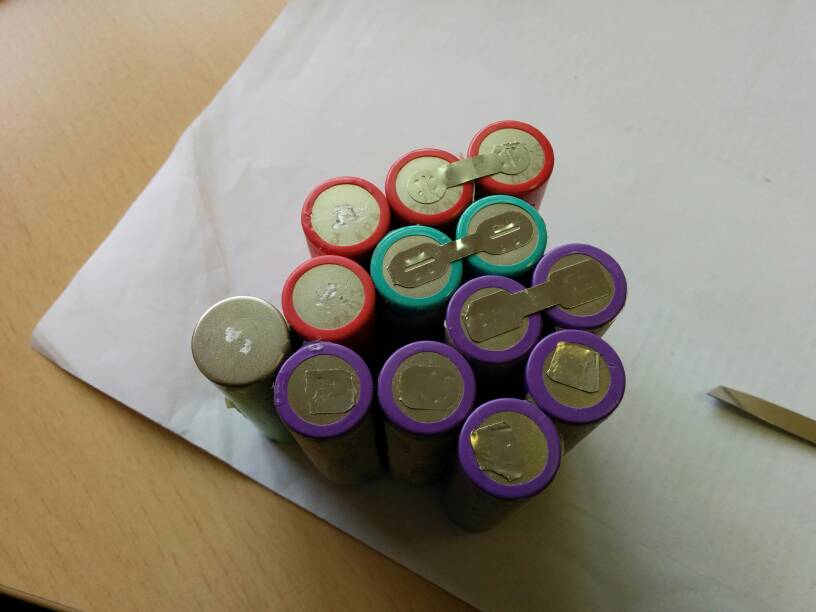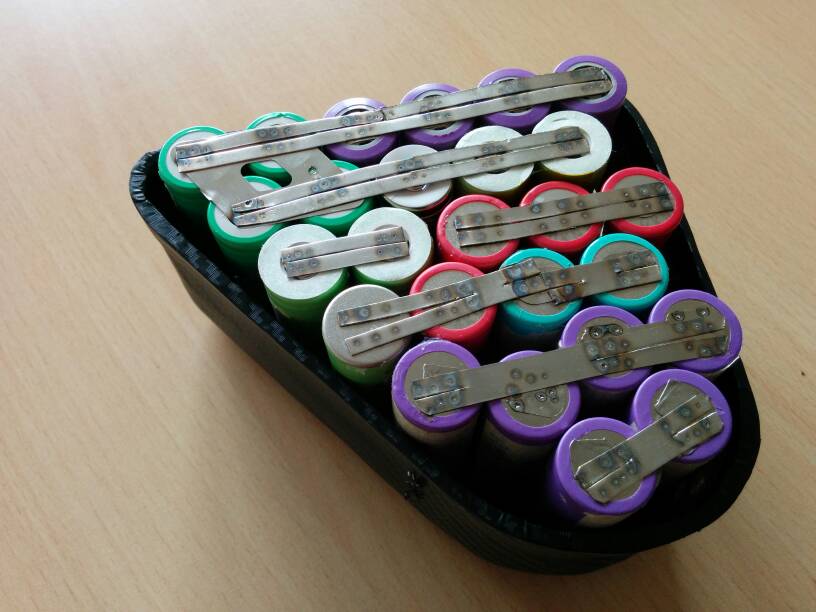bikegeek said:
I've done the test once again but this time with salt, vinegar and hydrogen peroxide. You can see the result in the pictures.
The two small ones (0.1x5mm) are the same and pure nickel, the big one (0.15x8mm) has an area that under the liquid it rusts but when I pull it out the rust washes away. And is remaining only a mat grey area different than the nickel from the surface. Is this steel? Why is not remaining rusty out of the liquid?
What is the problem if I weld with that?
You should only use salt water, as nickel hydroxide decompose hydrogen peroxide you could have confusing rust over the sanded area. Salt water is more than enough to make corrosion over most steel compound in just 6 hours. Let it 24h and you will have perfectly differences from the not sanded nickel tinned part and from the sanded steel oxidation, and get absolutely
nothing over a pure nickel sample. As the oxidation is formed inside a dissolution, most of the particles fall from the steel and stay sustained over its surface, so after washing with water, you will have just a visible darked area that also confirm that the surface is steel.
markz said:
Did you put in the repository this
DIY Tab Welder from this guy ?
Really interesting, just added, thanks for sharing.
vicens said:
I'm looking at my bicycle wire.
I have my bicycle motor nc 9c. rated power 1000w. controller 48V 28A. I'm using 2.5mm2 cooper wire. equivalent to 10 AWG.
Am I using too thick wire?
According to the table. awg17 1.00mm2 wire. The maximum is 19A.
Would it be recommended to use this wire to a motor 350W, controller 36V 15A? The motor running at rated power output something like 36V 9.5/10A. It is half the maximum amps.
Is it better to use AWG 18.7 Limit 15A, to not waste copper?
Is it the same recommendation with nikel strips?
Did nobuo can add different measures that do not appear?
nikel strips of:
0.2x7
0.3x7
length is always a factor to take into account, AWG10 would be not far enough if your wires are 100 meters long

The table takes into account standard dimensions for a nickel piece and for a battery standard wiring lengths (half a meter in the worst case). it is important to mark (as it is described) that those values are for an optimal efficiency, you could use double the amps indicated and just have your wires warm (never recommended) and rise over 3x the values to have smoke insulators. As greater the wiring diameter the better efficiency (less voltage sag) so never is a really waste, just stick to the recommended values. For a maximum 10A continuous output, AWG16 is more than enough for your battery leads.
I will update the table as soon as possible including further values, together with more visual tests.
joss said:
I received some pure nickel strip in the post yesterday so I decided to do a short video showing the corrosion performance difference between this and the steel/nickel plated version I received a few weeks ago.
https://youtu.be/1r2tkwUnNv4
...now looking forward to putting my new battery pack together!
Thanks for sharing, I will add to the main page.
DVDRW said:
Pure nickel strip seems pointless to me.
Nickel plated is 0.18mm thick
Pure nickel is 0.1mm thick and 2x more expensive
So current capability is about same?
You throw battery pack away anyway after few years when depleted before strip corrosion starts.
Current capability is around a 110% higher in pure nickel, average cost is around 80% higher. Spot welds are the first (and not visible) to start corrode, and "likely" happen with acid battery leads, corrosion forming over the conductor surface make a reduction conduction capability over the time, decreasing overall efficiency and safety. Nickel plated Steel is not a recommended material for spot welding. However, for specific dry environments, it could work acceptable using the right amount of layers.




